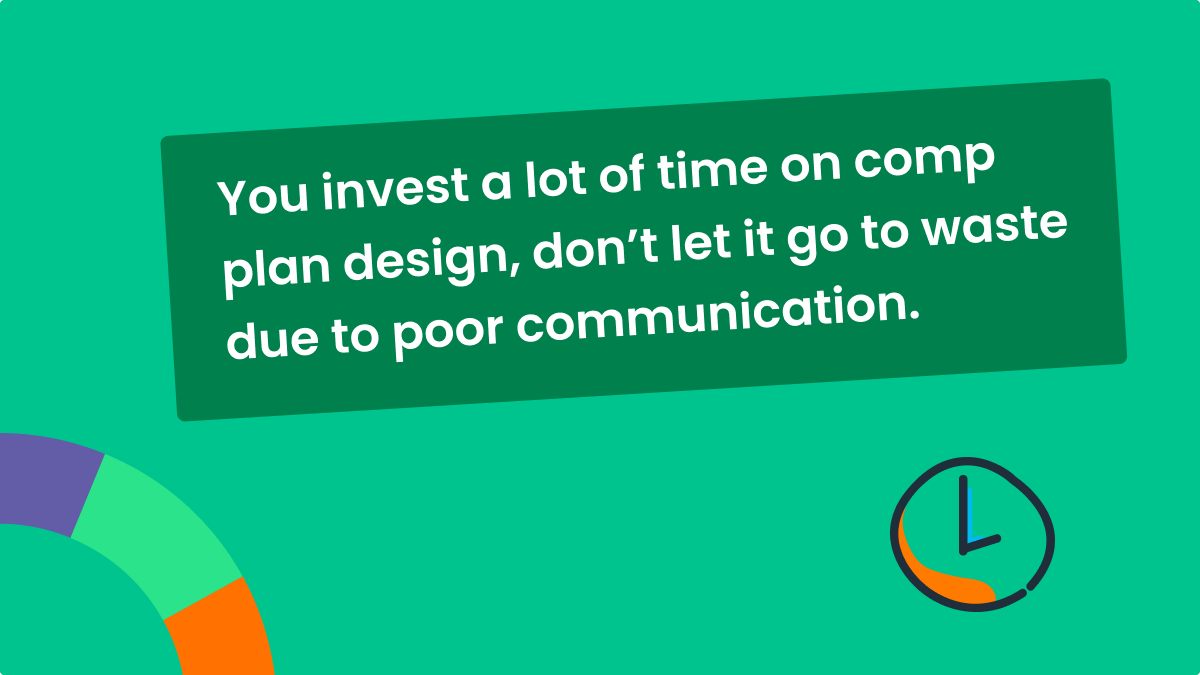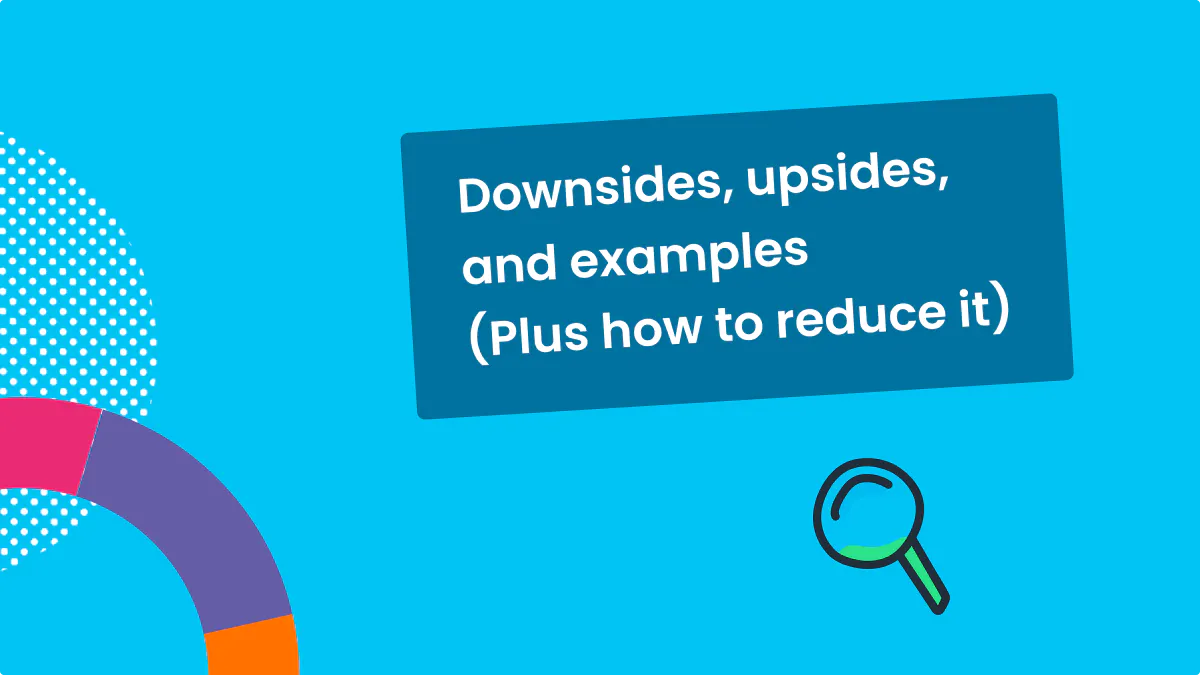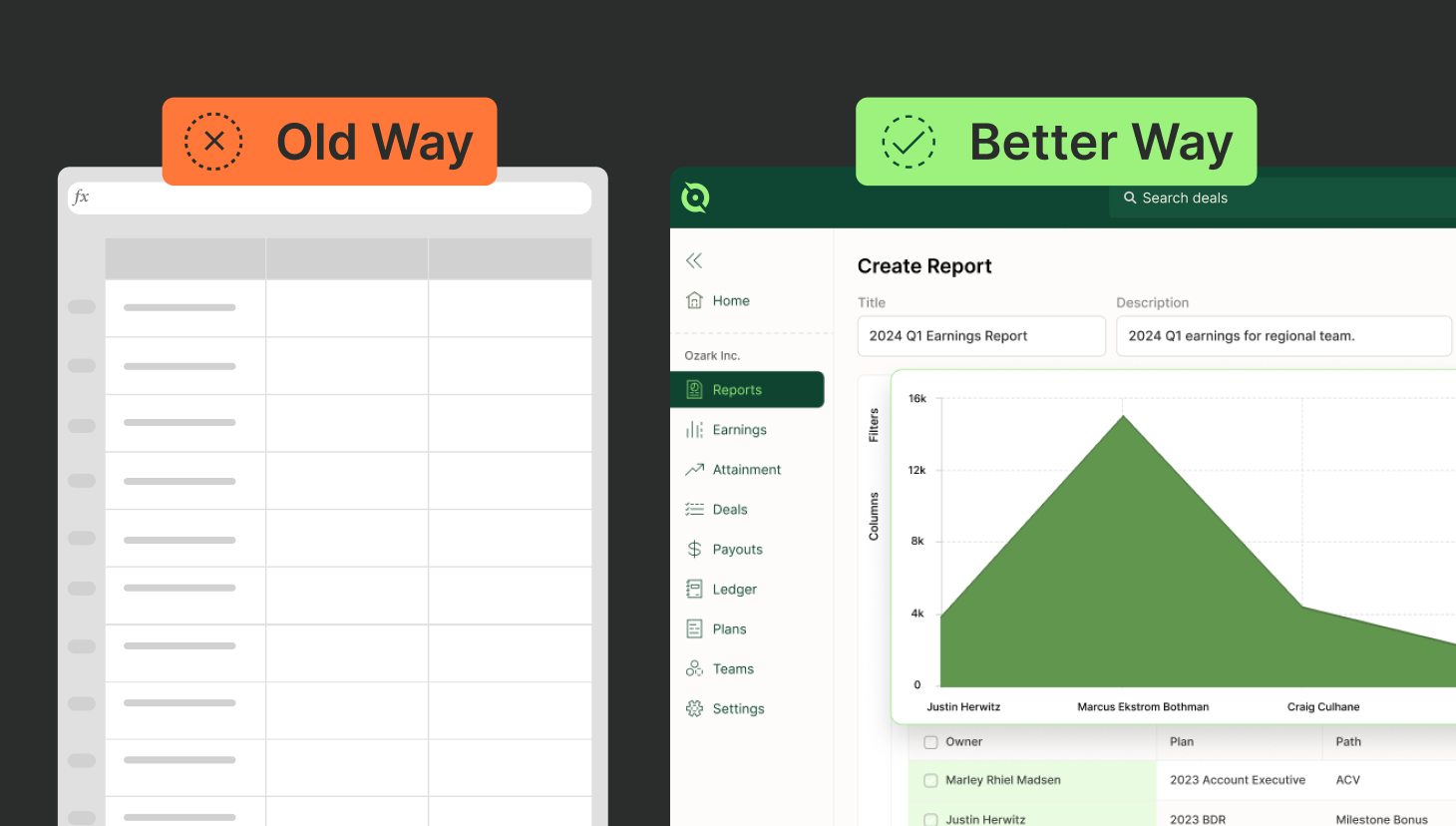How you roll out your comp plan design to leadership and your sales team can have a huge impact on the trust level and rep retention in your organization.
Mark Roberge, Managing Director of Stage 2 Capital, for example, has been on the recipient side of a mass exodus. when “10 amazing salespeople from a particular company came to me with job applications.”
The cause?? A comp plan design change fumbled by a bad communication plan.
According to Mark, “You have to carefully manage the design and communication process of a compensation plan.”
Just as important as it is for reps, leadership also needs to have a solid understanding of the comp plan. Doing so creates alignment across the organization and helps Sales, RevOps, and Finance work together to design mechanics and levers that help them reach their revenue targets.
Below, we outlined what to include when preparing your comp plan design for presentation to leadership.

Compensation Hub
Discover, compare, and build compensation plans. Customize compensation models using 9 variables.
Find Compensation PlansExample compensation communication plan for reps
Equally important is how you communicate new sales compensation plans and changes to your reps. To do so effectively, leaders should provide proper context and details. Below, we provided a brief explanation of each element you should include in an example compensation communication plan.
Multiple meetings
When it comes to meetings, start broad and become more detailed when sharing a new or revised comp plan design. You can accomplish this through the following series of meetings.
Voluntary town halls
Mark recommends holding voluntary town halls prior to the comp plan design process.
During this open discussion, share potential changes to the comp design that reps can expect next quarter with the VP of Sales and possibly the CEO present.
Outline the drivers of the plan and reasons for upcoming changes. Then ask for comments and suggestions.
Following the meeting, post a draft of proposed plan changes on Slack to facilitate rep comments and further discussion. Your reps will have a few good ideas, so you can use those in your plan design. Just make sure you explain why you can’t use the bad ones.
As Mark says, “Your salespeople deserve to know why the design is the way it is and why changes they propose can’t be done.”
This meeting prevents any surprises when you roll out the final plan.
SKO
A lot of revenue teams will officially introduce new comp plans at the sales kickoff (SKO). If you’re adding this to your agenda, which we highly recommend, the CSO, CRO, or VP of Sales should:
- Explain how business goals link to sales goals
- Demonstrate alignment across HR, sales operation, and sales executives in designing the plan
- Clearly delineate changes to the comp plan and the why behind these changes
- Show how the company will support the sales team with these changes
- Inspire the sales organization
Team and one-on-one plan reviews
In addition to the SKO, we suggest sales managers conduct team meetings and one-on-ones specific to compensation. This will provide an opportunity for managers to explain the plan, and how it impacts both the team and individual contributors. This marks a great time as well to distribute detailed plan documents, FAQs, videos, what-if calculators, and other launch materials for sales team members to review.
Plan verification
Once you have communicated the plan changes to your team, ask your reps to show their understanding by signing a commission agreement.
This is an essential step that entails asking reps to indicate they understand their plans by signing off on them. Leadership should introduce plan verification or re-verification every time they make a change to the compensation plan. You can complete this process by using DocuSign, via email, in person, or by leveraging our in-app Plan Verification feature.
Explain the why behind the changes
Make it easier for your team to accept changes by helping them understand why leadership adjusted a plan and how new resources and enablement will support them. This creates excitement and adoption of the new program.
Create channels for reps to reach out with comp-related questions
Plan documents should answer most rep questions, but it’s best to provide your team with multiple ways to address remaining questions. Some options include a private chat channel, email threads, phone, and in-person.
Plan your comp plan design presentation
You invest plenty of time on comp plan design, so don’t let it go to waste due to poor communication. Plan to present your plan to your leadership and team to ensure understanding while building excitement and adoption. Otherwise, you risk rep attrition and missed revenue targets. Have your comp plans ready to go? Try running it through Compensation Hub to see how healthy it is for your business looking ahead.




